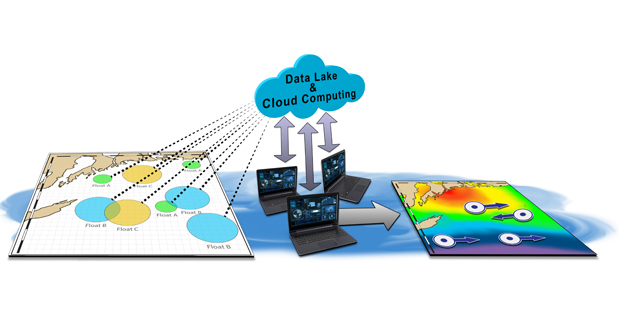
Source: DARPA
The internet of things connects an ever-growing number of smart devices for up-to-the-minute monitoring and tracking of many common events. Head out to most parts of the open ocean, however, and no such capability exists for real-time monitoring of maritime activity.
DARPA today announced its Ocean of Things program, which seeks to enable persistent maritime situational awareness over large ocean areas by deploying thousands of small, low-cost floats that could form a distributed sensor network. Each smart float would contain a suite of commercially available sensors to collect environmental data—such as ocean temperature, sea state, and location—as well as activity data about commercial vessels, aircraft, and even maritime mammals moving through the area. The floats would transmit data periodically via satellite to a cloud network for storage and real-time analysis.
“The goal of the program is to increase maritime awareness in a cost-effective way,” said John Waterston, program manager in DARPA’s Strategic Technology Office (STO). “It would be cost-prohibitive to use existing platforms to continuously monitor vast regions of the ocean. By coupling powerful analytical tools with commercial sensor technology, we plan to create floating sensor networks that significantly expand maritime awareness at a fraction of the cost of current approaches.”
The technical challenge for Ocean of Things lies in two key areas: float development and data analytics.
Under float development, proposers must design an intelligent float to house a passive sensor suite that can survive in harsh maritime environments. Each float would report information from its surroundings for at least one year before safely scuttling itself in the deep ocean. The floats will be required to be made of environmentally safe materials, pose no danger to vessels, and comply with all federal laws, regulations, and executive orders related to protection of marine life.
The data analytics portion of the Ocean of Things program will require proposers to develop cloud-based software and analytic techniques to process the floats’ reported data. This effort includes dynamic display of float locations, health, and mission performance; processing of environmental data for oceanographic and meteorological models; developing algorithms to automatically detect, track, and identify nearby vessels; and identification of new indicators of maritime activity.




